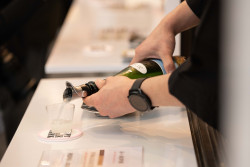
Originally published on metropolis.co.jp on February 2010

Illustration by Shane Busato
Whether you believe that winter is half over or only half begun, there’s no getting around the fact that we’re in the middle of the coldest month of the year. And if you’re suffering the insulation pinch, you’re probably feeling the cold inside as well. Yet with every notch the heater goes up, so too does the guilt (just think of the wasted electricity, the painful utility bills!) and the amount of cream you need to slap on to fight the drying air.
As it turns out, that’s not even the worst of it.
“A tendency to rely on heaters weakens the body’s natural ability to warm from within and leads to shallow breathing,” says locally based yoga and qigong instructor Sara Shivani, who runs the holistic lifestyle program Living Shizen.
So what’s a freezing Tokyoite to do? Shivani herself admits that she thought about “going along with every other yogi to places that are warm all year round.” But as tempting as that sounds, she decided that winter is something to be confronted, if not embraced. “It gives us a chance to experience how amazing the human body really is.”
She recommends making use of “the body’s own tools—breath, hands to massage, even your mind” to ward off feelings and thoughts of the cold. Starting with breath, which in the yoga world is synonymous with life energy, she suggests learning to breathe deeply like a baby again. To give this a try, place one hand below the navel and one above, then inhale deeply, concentrating your breath in the center of your body, enough to feel your stomach rise and fall. “Try doing this for a minute or two before getting out of bed,” she says.
Another of Shivani’s warming techniques draws on the qigong and traditional Chinese medicine belief that the kidneys are a key source of the body’s life energy. Along with keeping these sometimes sluggish organs warm, she says that massaging them can add immediate heat to the body. “Like anything esoteric, you don’t have to take it at face value. Try it. At least let that be the first thing you do before you turn on the heater.”
Still stuck on the idea of consuming your way out of the cold? If you’ve been to the convenience store recently, you’ve probably noticed that ginger is enjoying a particularly good season, showing up in everything from canned tea to cup noodles. According to Japanese cooking instructor Hiromi Kusano, the knobbly tuber “improves blood circulation, so you feel warm after eating [it].” Like other winter produce that grows in the north of Japan, such as leeks, potatoes, carrots and burdock, this tough little root holds its own against the cold.
While we’re not completely buying into the current fad, making your own ginger tea is actually rather simple.
“Add a spoonful of grated ginger to ordinary black tea,” says Kusano. “If you grate a lot of ginger, you can put the rest in the bath.”
Not a bad idea, that. All you need to make shouga-yu (ginger bath) are some empty net-style tea bags, which can be purchased at the ¥100 store. Fill these with ginger, add them to the tub, then ease yourself in and absorb all that delicious warmth.
While a full body soak requires time—a luxury that some of us can’t always afford—it is possible to have a partial soak and still get things done. This brings us to another covetable Japanese innovation: the home foot bath. Shivani swears by her hietorikun (literally, “little guy that takes away the cold”), which she uses every night while tearing through her emails. Another friend is devoted to her “Warming Bubble Spa,” saying it helps her sleep like a baby, and a quick search through Bic Camera and Rakuten turfs up a number of such gadgets. Some of them massage, some steam, but all share one common goal: to ease the lives of the samugari, people who are extra sensitive to the cold.
- To learn more about Sara Shivani’s yoga and qigong workshops, see http://livingshizen.com.
- To find out more about warming Japanese cuisine, contact Hiromi Kusano via http://hiromikusano2.wordpress.com.







